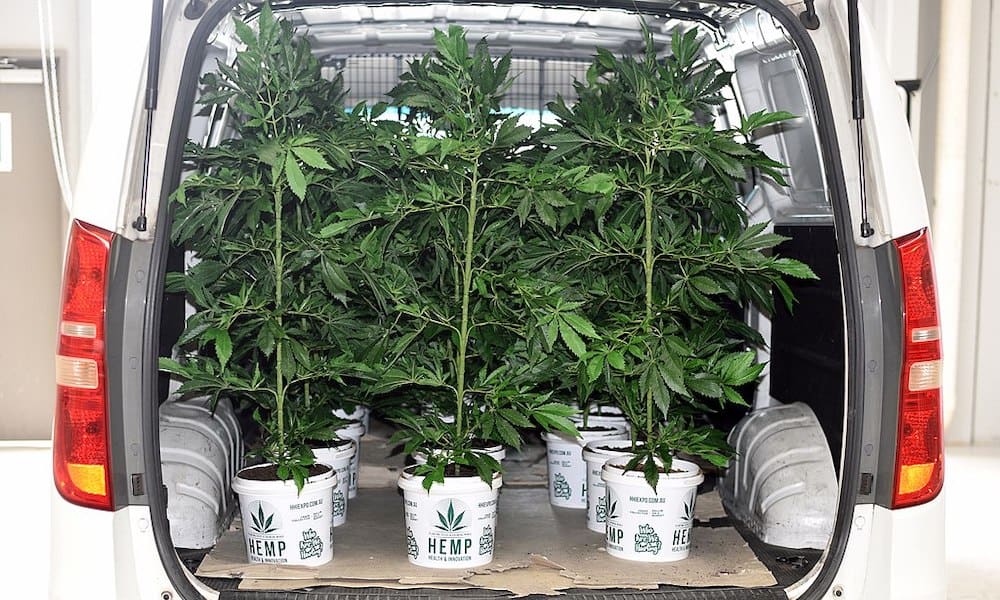Utah Hemp Farmers Growing Strains Named After Obama and Trump
FeaturedHempTrending StoriesUtah November 27, 2019 MJ Shareholders 0

Farmers in Utah have begun growing hemp following the legalization of the crop late last year, including strains of the plant with names featuring a decidedly political twist. One varietal, Obama, is named for former President Barak Obama, who was in office when the 2014 Farm Bill that authorized hemp research pilot programs was signed into law.
Another strain, Trump, is also named for a president that figures prominently in hemp history. President Donald Trump signed the 2018 Farm Bill in December, which legalized the crop as an agricultural commodity in the United States.
Farmer Kenny McFarland grew hemp for the first time this year, planting clones on eight acres of his farm in Weber County. He shared some of the knowledge he gained from the experience at the annual convention of the Utah Farm Bureau that was held last week in Layton.
“Trump was super aggressive,” McFarland said, drawing laughs from the crowd of farmers at the event.
Since the 2018 Farm Bill was signed into law, the Utah Department of Agriculture and Food has issued 290 cultivation licenses to grow hemp, including 190 licenses that were active for this year’s growing season. Farmers were required to pay a fee of $500 to obtain the license.
Difficult First Growing Season for Hemp in Utah
Drew Rigby, the Utah agriculture agency’s director of medical cannabis and industrial hemp, said that the first year of hemp cultivation in the state was a difficult learning experience. Besides Obama and Trump, farmers also gave other strains of hemp a try, including ones named Cherry Blossom, Tokyo, and Merlot.
“We did not have a lot of successful grows and the quality of the product was nothing to write home about,” Rigby said. “It is not unusual to struggle the first year.”
Mont McPherson of Millard County planted 60 acres of hemp at his farm. He used four different varieties of what was supposed to be feminized seed but achieved a germination rate of only 30 percent, including 10,000 to 15,000 male plants that had to be removed from the field to prevent the female plants from being pollinated and producing flowers with seed.
“We spent hours driving the fields looking for males,” McPherson said.
“It was pretty much a train wreck,” he added.
Rigby agreed that male plants posed a challenge for growers, noting that just one male plant in a field can pollinate the females, producing seed and reducing the value of the crop.
“Culling males is a very difficult thing,” he said. “Males have zero value in this game.”
Rigby said that “the window to make a quick buck from growing hemp is closing” and that farmers shouldn’t consider the crop unless they are in it for the “long haul.”
“Don’t waste your time,” he said.
David Politis, a consultant for the Utah Farm Bureau who was also at last week’s convention, said that while the state’s climate is ideal for growing hemp, farmers should be cautious about growing the new crop.
“This market is like the wild, wild West,” he said. “There are a lot of crooks or people who don’t know what they are doing. For better or worse, there are producers who hear about this and they see the opportunity to make a quick buck and strike it rich quickly.”
MJ Shareholders
MJShareholders.com is the largest dedicated financial network and leading corporate communications firm serving the legal cannabis industry. Our network aims to connect public marijuana companies with these focused cannabis audiences across the US and Canada that are critical for growth: Short and long term cannabis investors Active funding sources Mainstream media Business leaders Cannabis consumers










No comments so far.
Be first to leave comment below.